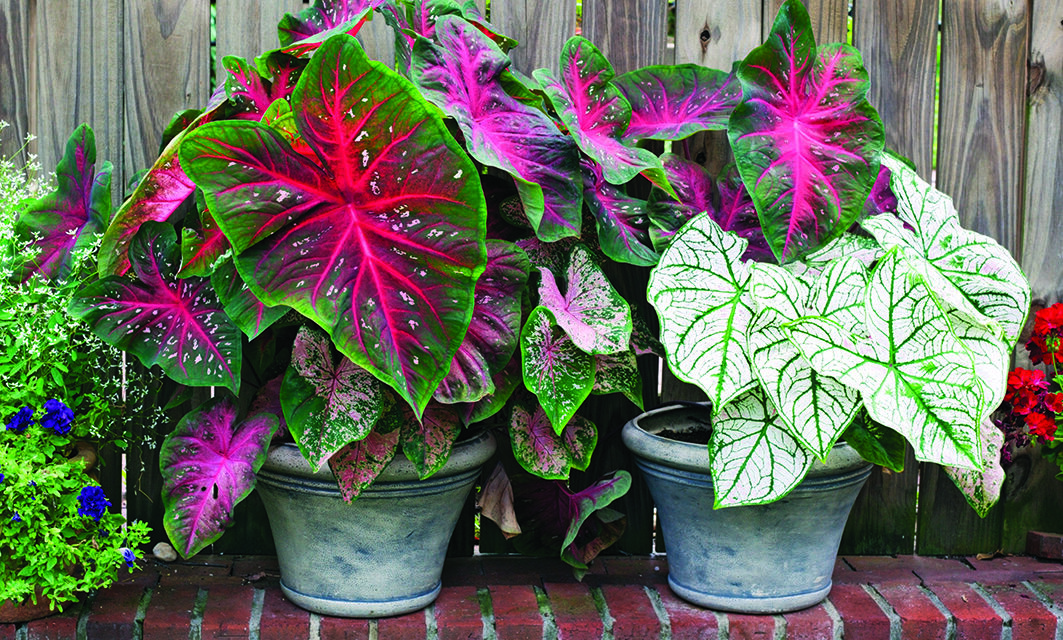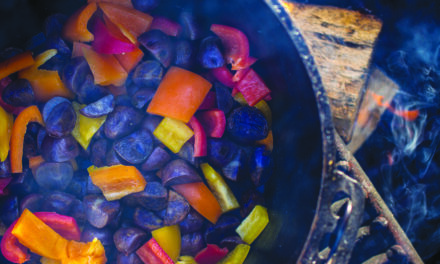Tropical plants bring a special look to a home and outdoor landscape and as people search for solutions during the uncertain times during the coronavirus epidemic, something special could be just what you need.

Maryland homeowners often use large ones, such as caladium, shown here, banana, elephant ear, Chinese hibiscus, Mandevilla, palm, and ficus, to provide a unique tropical appearance.
Often large and fast growing, tropicals can quickly dominate a space, turning a backyard deck into an exotic resort or and sun-drenched room into an indoor jungle.
“With the problems we’re facing today … having plants and something to care for is not only good for mental health, it gives you something pretty to look at,” said Rachel Rhodes, Master Gardener Coordinator for University of Maryland Extension in Queen Anne’s County, who counts several tropical plants among those in her home landscape.
Rhodes said many tropicals are available at garden centers, large and small, and there are several varieties and colors to choose from.
Homeowners often use large plants, such as banana, caladium, elephant ear, Chinese hibiscus, Mandevilla, palm, and ficus, to provide a unique tropical appearance.
Once past the frost-free date, you’re OK to plant them outdoors, Rhodes said, and leave it plenty of room to grow. Even in more moderate climates like Maryland, many tropicals grow rapidly compared to many natives.
When you do plant, think ahead a couple months about whether you’ll dig it back up and bring it indoors to overwinter or let it take its chance outside and likely die.
When planting in pots, use an oversized pot in most cases as it will thrive in the hot temperatures of the summer and outgrow a smaller pot in a hurry.
“Most of these plants you’re going to bring in and are going to be in a large pot,” Rhodes said. “Usually they’re a substantial size plant. You really need to make sure you have the space for them.”
Palms are a common element of a tropical garden, with the most commonly-sold are parlor palm that have leaves about two-feet long.
For the all-important color, hibiscus, calladiums and Mandevilla vines are a few common plants.
Others include cordyline, bromeliads, flamingo plant, clivia, plumeria, orchid, canna lilies and pavonia.
Heavy foliage and large leaf plants like banana or philodendron are good tone-setters, and bring in the jungle-feel and smaller leafed plants like ficus, fern and palm can make the next layer and add to the foundation.
Put flowering plants where you want color. With design subjective, the only rule that should be strictly followed is to not use more than you’re comfortable with. The goal is stress relief, remember?
When it comes time to move the paradise inside — watch for average lows to consistently hover in the high 50s — Rhodes said keeping them together as much as possible is helpful.
“It creates like a little environment with them together and it can increase the humidity around them,” she said.
Adding a humidifier to the room is another way to keep them happy, she said. It’s very important, she added, to give each plant a thorough scouting for pests and disease as they enter the house. Palms are very susceptible to spider-mites, the same for Mandevilla vine along with mealybugs, just to give a few examples. Bringing those pests inside can make it easier for the bugs to spread to other plants and cause aggravation.
Allow for an adjustment period to allow the plants to get acclimated to their new home.
“There will be some weeks where you’re like, ‘ugh, I’m not sure they’re going to make it,” Rhodes said, but it still has a good chance of survival with access to a lot of sun.
If they do appear to struggle, don’t take it as a sign to water them. Rhodes said go by soil moisture in the pot and not by looks of the plant to know if it’s time to water while they are in your house.





